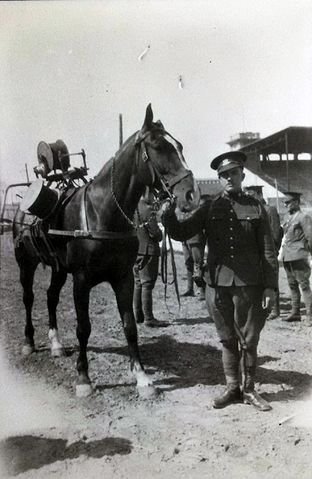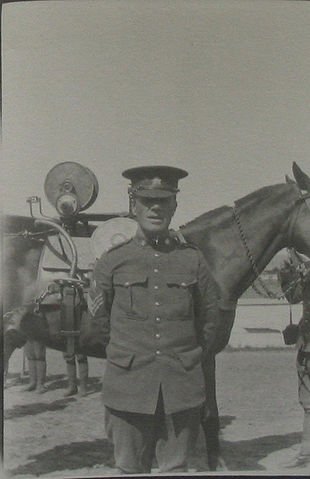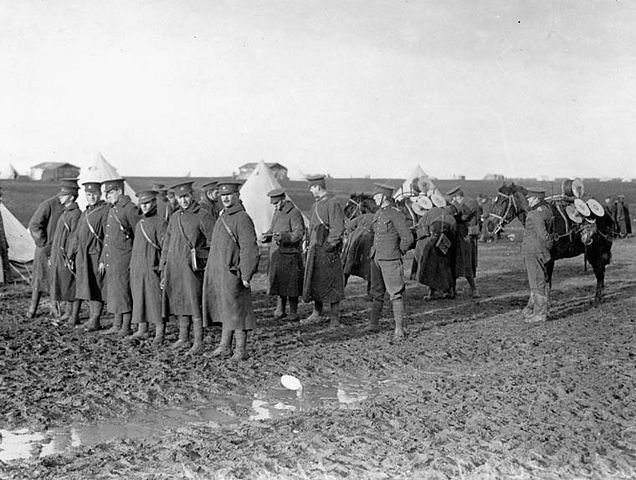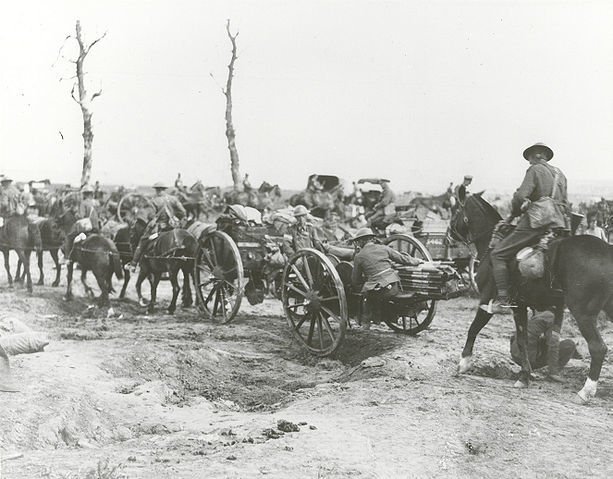Several years ago when I started to learn about the various types of military saddles I would try and find as many images of British Military saddles as I could. Eventually I had built up a fair collection of images of the different types and also of the UP pack saddle with different types of loads fitted.
I eventually came across a rather poor quality image of an Indian Soldier leading a Mule in Gallipoli and it looked as if the Pack saddle on the mule had been modified to hold a reel of telegraph wire. The poor quality of the photo meant that it wasn’t clear if the saddle was one of the following:
- a modified Pack Saddle
- a modified UP Saddle (which occasionally happens)
- A bespoke saddle for signals units

At the time I was helping a couple of historians with some of their research into equipment of cavalry and mounted units and I enquired with them if they had ever seen anything like this before and if they knew what is was?
The responses were pretty poor to be honest, ranging from “I’m not interested in that type of detail” to “it doesn’t look like a cavalry item, so it can’t be important.”
It was a bit of a hard lesson for me and helped to shape some of my views on the relationships between Historians, Battlefield Guides and Reenactors. It also made me start to understand where each of these groups have gaps or limits in knowledge or levels of detail.
Not to be daunted I continued to search for information on the different types of saddles and how they were configured and modified, always keeping an eye out for hopefully a clearer image of the “Cable Saddle”
The break through came over this summer as I was researching the Heliograph bucket for the UP saddle and I came across this really clear image of the Saddle with a Canadian Engineer Unit.
While it seemed to me that saddle configuration may have started as a “Heath Robinson” modification of a UP Pack Saddle it appeared to have become a formal Pack Saddle variant, which may have accounted for the slight variations in the saddles in the two photos. I suspected that the saddle shown in the photo from Gallipoli was probably one of the early versions, while the one shown below is a more refined model. My assumptions may well have been influenced by the quality of image rather than detail of the saddles!

It was purely by chance when I was researching the Heliograph saddle buckets that I got chatting via messenger with the a chap called Jonathan Paynter who had an original set of heliograph and telescope buckets and as we chatted he told me that had done a set of drawings of the Cable Pack Saddle, from this I became aware of the cable types used with the saddle.
It is clear that the saddles shown in the two photos had different types of cable, the photo of the Indian Signaller with the mule has a large drum fitted and a different front arrangement, my initial guess was that this may be D1 type cable. However a bit of research into Telegraph cable types provided some real bonus details. The Royal Canadian Signals Website provided the detail of the differences in the cables, a link to the website is below. From the website it states that D2 cable is a lightweight usage telegraph cable and D3 is heavy weight usage, with D2 cable being ideally dispensed from Pack equipment (Bingo!). It is also interesting to note that D2 Twin cable is available. Having looked at the website details I discounted D1 cable as an option as it is a lighter weight cable and only single strand.
D2 single strand is 20-25 lbs per mile and comes in half mile reels and has a breaking strain of 140lbs, D2 twin is approximately 50 lbs per mile with a breaking strain of 250 lbs.
D3 single is 40-50 lbs per mile with a breaking strain of 196 and D3 Twin is 84 lbs and a breaking strain of 354 lbs. Based on that information the larger reels appear to be the D2 & D3 twin Cable reels.
The chat with Jonathan gave me more details and showed that the saddle would carry upto 6 reels of Cable (D2 or D3 type cable) and these would dispense a single reel out over the back of the Pack Horse/ Mule and would allow the signals team to then place the cable in position. I would also suspect that where twin cable is used they would cut the load to 3 cable reels due to both weight and also the space occupied on the saddle.
The Royal Canadian Signals website also has a cracking photo section and in there I was able to find clear photographs of both versions of the Cable Saddle.



A link to the photo section of the Royal Canadian Signals Website is below, (its a cracking website so please go and have a look round it.) But the real benefit was that it showed that both types of saddle were proper variations of the Cable saddle and both appear to be able to dispense D2 and D3 cable (single and twin). I will make an assumption that the larger reel in the Gallipoli photo is a reel of twin cable.

So what is the purpose of the Telegraph Cable saddle? While the Cable Wagon would rapidly dispense cable along roads and tracks, it would have difficulty moving the cable onto the next stage of the journey going forward. Effectively the Cable wagon would operate at Signal Company/ Squadron level and above, and also with dedicated Cable Laying Units, and they were Divisional level assets. The Cable laying pack horse would be a Brigade level asset and be operated by a Signals Section or Signals Troop connecting Brigade HQ to Regiment/ Battalion HQs and would be able to move over more damaged or constrained terrain. The final connections forward would then be undertaken by men unreeling cable by hand.


While this may seem like it is a small deviation from my usual focus it does tick a couple of boxes for me. Firstly it is a variation on the pack saddle and part of the UP saddle family.
Secondly and importantly it is another element of information that debunks the assertion that Engineering can not be carried out from horseback. With Signalling, at this point in time, being an Engineering task this is an almost perfect example of engineering being delivered (dispensed) from Horse Back.
It’s surprising what you find when you go searching for other things!
References:
Royal Canadian Signals Website:
- details for Cables – http://www.rcsigs.ca/index.php/Field_cable
- Images from the Great War – http://www.rcsigs.ca/index.php/Photos_-_The_Great_War
